Abstract
Synthesis of enzymes of the 4-hydroxyphenylacetate meta-cleavage pathway was studied in Pseudomonas putida wild-type strain P23X1 (NCIB 9865) and mutant strains which had either structural or regulatory gene mutations. Induction studies with mutant strains each defective in an enzyme of the pathway showed that 4-hydroxyphenylacetate induced the hydroxylase and that 3,4-dihydroxyphenylacetate induced the 2,3-oxygenase, aldehyde dehydrogenase, isomerase, decarboxylase, and hydratase. This showed that the hydroxylase structural gene does not exist in an operon that contains any other structural gene of this meta pathway. Studies of mutant strains that synthesized constitutively the 2,3-oxygenase and subsequent enzymes suggested that the regulation of synthesis of these enzymes was coincident, and, in such strains, the hydroxylase was inducible only. Observations made with a putative polarity mutant that lacked 2,3-oxygenase activity suggested that the structural genes encoding this enzyme and subsequent enzymes of the pathway exist in the same operon. Studies of a regulatory mutant strain that was defective in the induction of the 2,3-oxygenase and subsequent enzymes suggest that the 2,3-oxygenase operon is under positive control.
Full text
PDF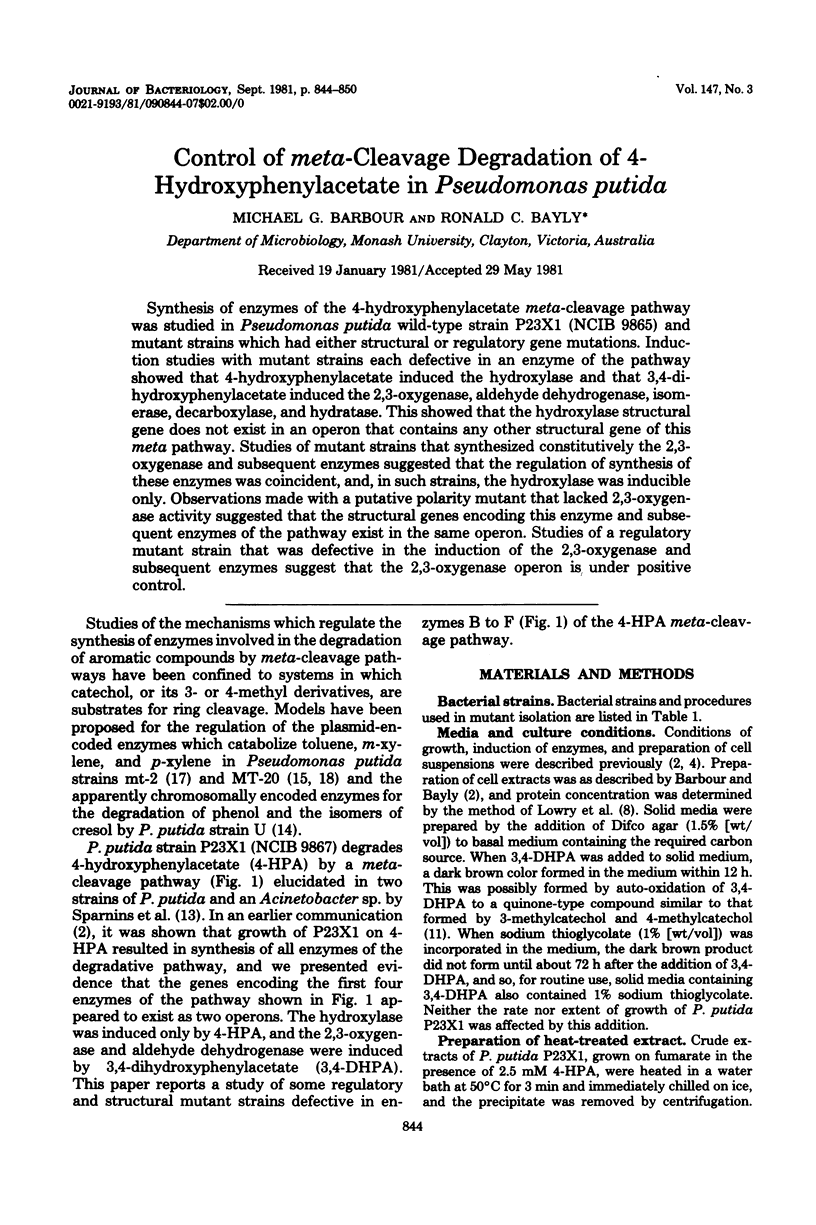
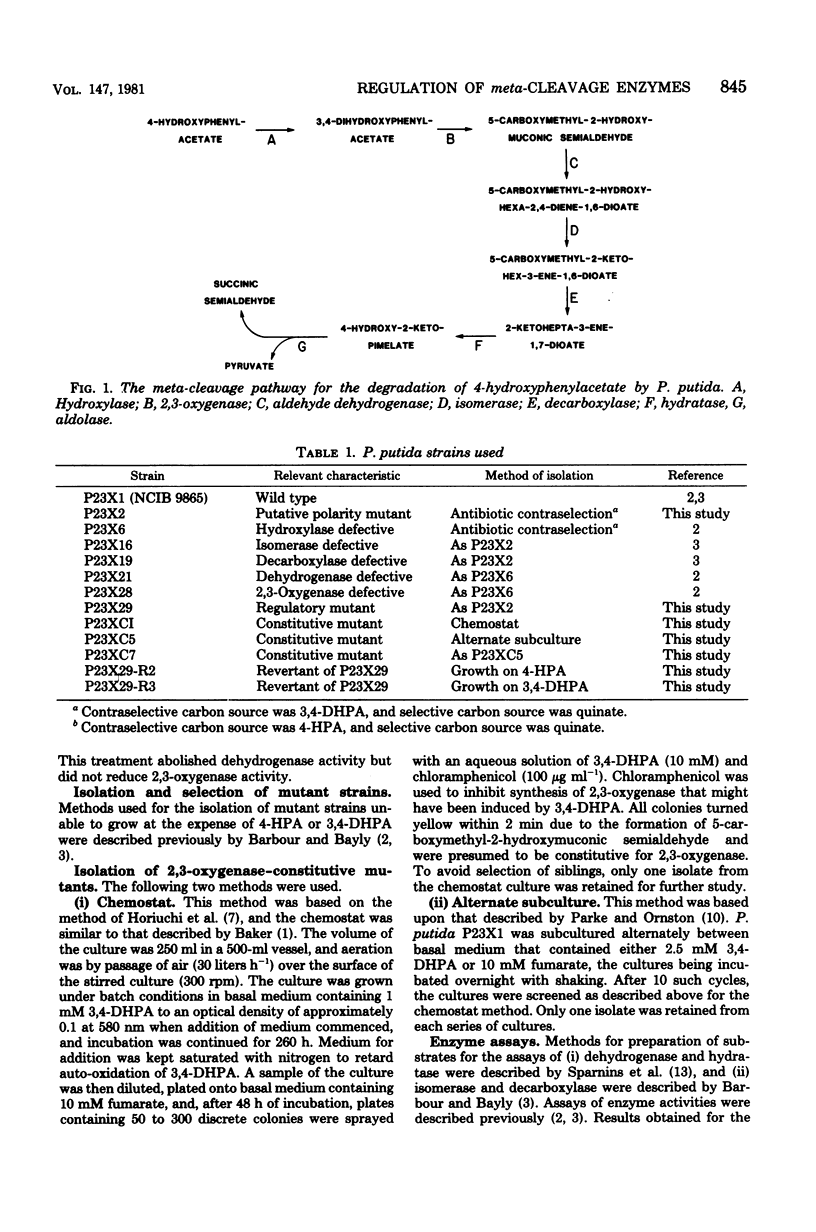
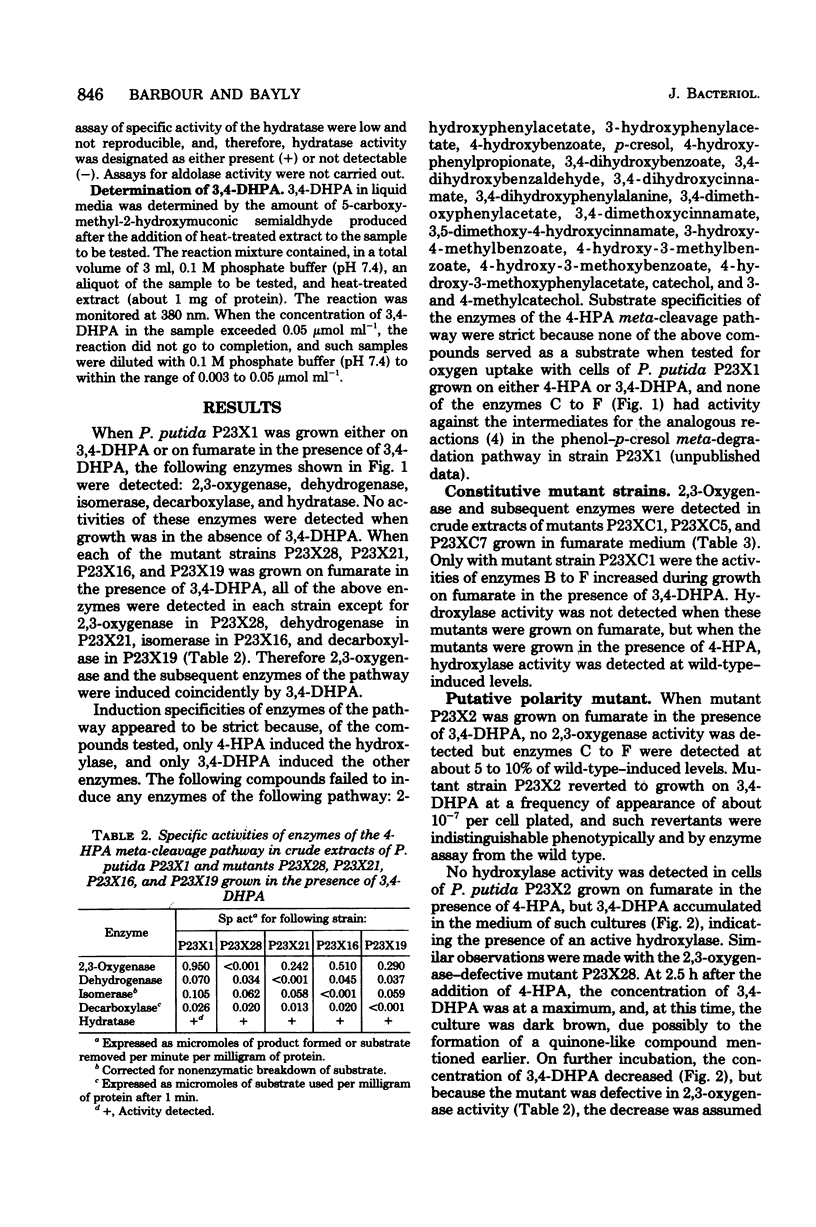
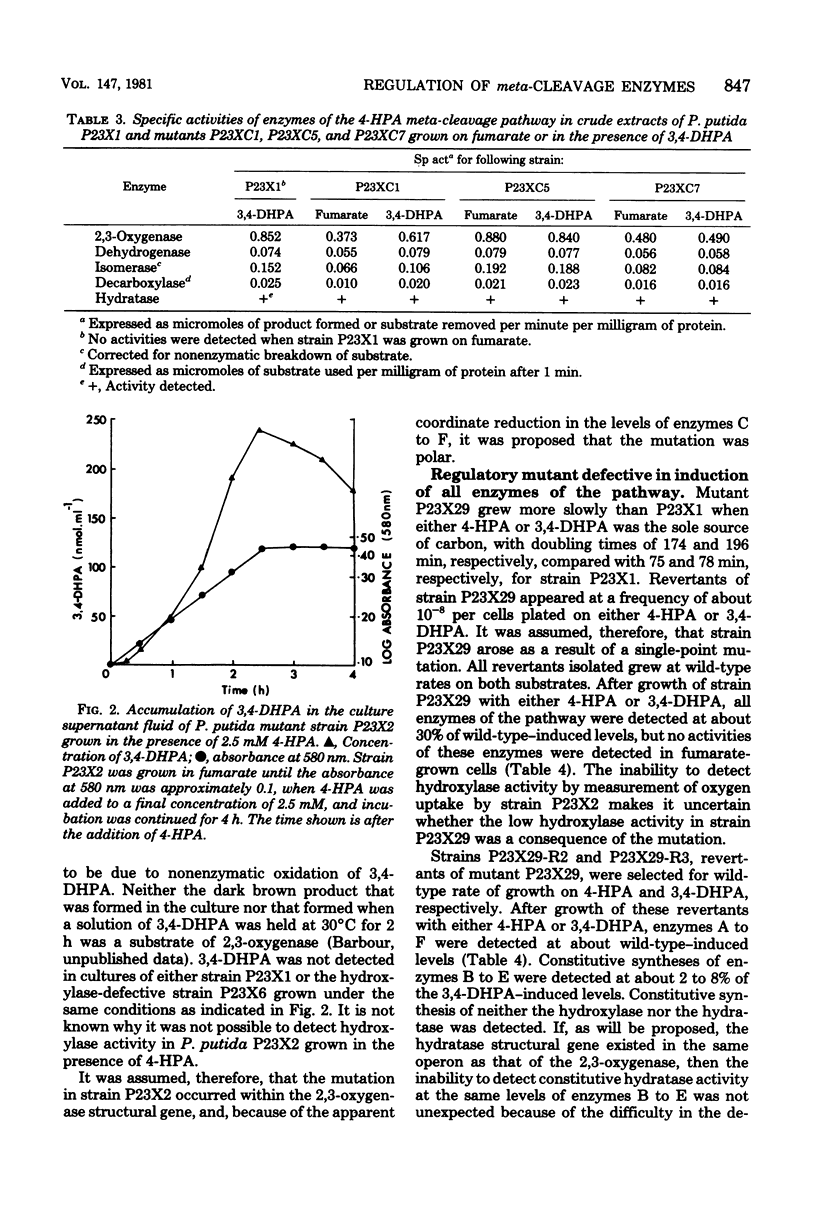
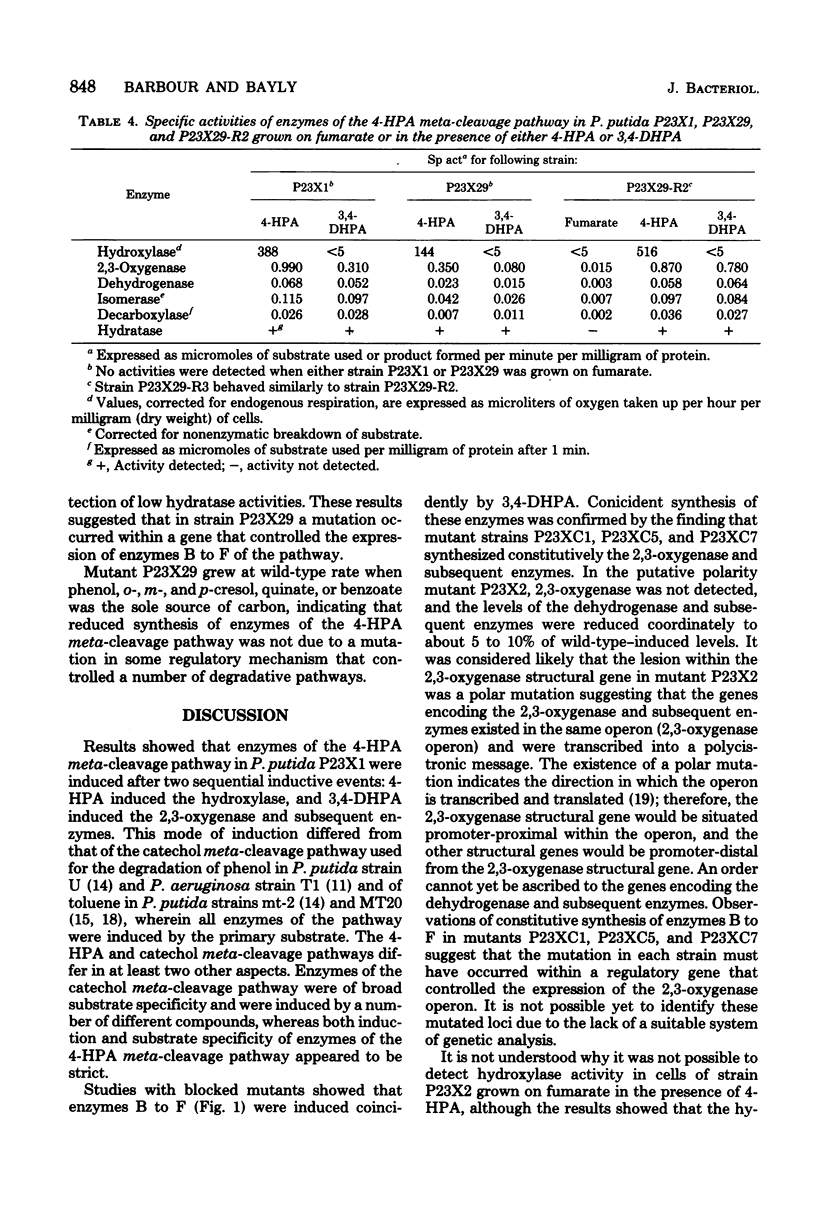
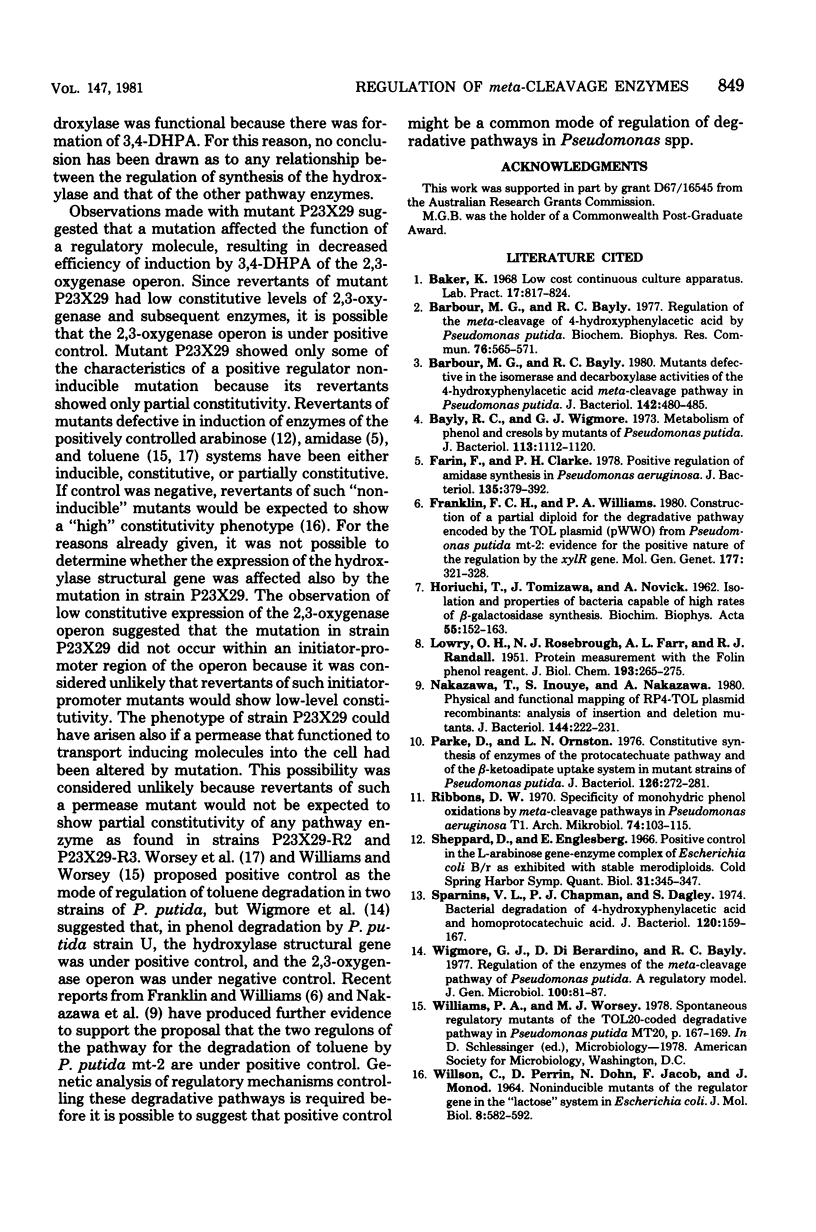
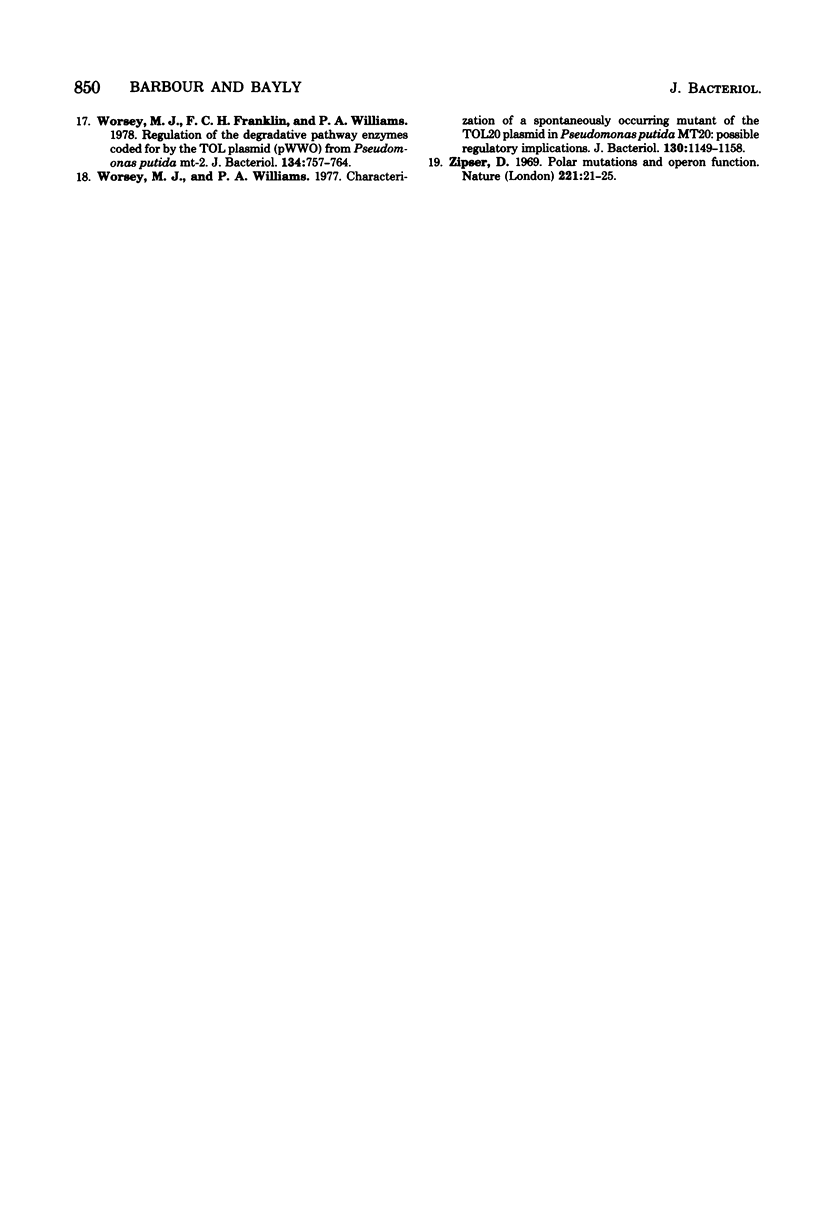
Selected References
These references are in PubMed. This may not be the complete list of references from this article.
- Barbour M. G., Bayly R. C. Mutants defective in isomerase and decarboxylase activities of the 4-hydroxyphenylacetic acid meta-cleavage pathway in Pseudomonas putida. J Bacteriol. 1980 May;142(2):480–485. doi: 10.1128/jb.142.2.480-485.1980. [DOI] [PMC free article] [PubMed] [Google Scholar]
- Barbour M. G., Bayly R. C. Regulation of the meta-cleavage of 4-hydroxyphenylacetic acid by Pseudomonas putida. Biochem Biophys Res Commun. 1976 May 23;76(2):565–571. doi: 10.1016/0006-291x(77)90761-6. [DOI] [PubMed] [Google Scholar]
- Bayly R. C., Wigmore G. J. Metabolism of phenol and cresols by mutants of Pseudomonas putida. J Bacteriol. 1973 Mar;113(3):1112–1120. doi: 10.1128/jb.113.3.1112-1120.1973. [DOI] [PMC free article] [PubMed] [Google Scholar]
- Farin F., Clarke P. H. Positive regulation of amidase synthesis in Pseudomonas aeruginosa. J Bacteriol. 1978 Aug;135(2):379–392. doi: 10.1128/jb.135.2.379-392.1978. [DOI] [PMC free article] [PubMed] [Google Scholar]
- Franklin F. C., Williams P. A. Construction of a partial diploid for the degradative pathway encoded by the TOL plasmid (pWWO) from Pseudomonas putida mt-2: evidence for the positive nature of the regulation by the xyIR gene. Mol Gen Genet. 1980 Jan;177(2):321–328. doi: 10.1007/BF00267445. [DOI] [PubMed] [Google Scholar]
- HORIUCHI T., TOMIZAWA J. I., NOVICK A. Isolation and properties of bacteria capable of high rates of beta-galactosidase synthesis. Biochim Biophys Acta. 1962 Jan 22;55:152–163. doi: 10.1016/0006-3002(62)90941-1. [DOI] [PubMed] [Google Scholar]
- LOWRY O. H., ROSEBROUGH N. J., FARR A. L., RANDALL R. J. Protein measurement with the Folin phenol reagent. J Biol Chem. 1951 Nov;193(1):265–275. [PubMed] [Google Scholar]
- Nakazawa T., Inouye S., Nakazawa A. Physical and functional mapping of RP4-TOL plasmid recombinants: analysis of insertion and deletion mutants. J Bacteriol. 1980 Oct;144(1):222–231. doi: 10.1128/jb.144.1.222-231.1980. [DOI] [PMC free article] [PubMed] [Google Scholar]
- Parke D., Ornston L. N. Constitutive synthesis of enzymes of the protocatechuate pathway and of the beta-ketoadipate uptake system in mutant strains of Pseudomonas putida. J Bacteriol. 1976 Apr;126(1):272–281. doi: 10.1128/jb.126.1.272-281.1976. [DOI] [PMC free article] [PubMed] [Google Scholar]
- Sheppard D., Englesberg E. Positive control in the L-arabinose gene-enzyme complex of Escherichia coli B/r exhibited with stable merodiploids. Cold Spring Harb Symp Quant Biol. 1966;31:345–347. doi: 10.1101/sqb.1966.031.01.044. [DOI] [PubMed] [Google Scholar]
- Sparnins V. L., Chapman P. J., Dagley S. Bacterial degradation of 4-hydroxyphenylacetic acid and homoprotocatechuic acid. J Bacteriol. 1974 Oct;120(1):159–167. doi: 10.1128/jb.120.1.159-167.1974. [DOI] [PMC free article] [PubMed] [Google Scholar]
- WILLSON C., PERRIN D., COHN M., JACOB F., MONOD J. NON-INDUCIBLE MUTANTS OF THE REGULATOR GENE IN THE "LACTOSE" SYSTEM OF ESCHERICHIA COLI. J Mol Biol. 1964 Apr;8:582–592. doi: 10.1016/s0022-2836(64)80013-9. [DOI] [PubMed] [Google Scholar]
- Worsey M. J., Franklin F. C., Williams P. A. Regulation of the degradative pathway enzymes coded for by the TOL plasmid (pWWO) from Pseudomonas putida mt-2. J Bacteriol. 1978 Jun;134(3):757–764. doi: 10.1128/jb.134.3.757-764.1978. [DOI] [PMC free article] [PubMed] [Google Scholar]
- Worsey M. J., Williams P. A. Characterization of a spontaneously occurring mutant of the TOL20 plasmid in Pseudomonas putida MT20: possible regulatory implications. J Bacteriol. 1977 Jun;130(3):1149–1158. doi: 10.1128/jb.130.3.1149-1158.1977. [DOI] [PMC free article] [PubMed] [Google Scholar]
- Zipser D. Polar mutations and operon function. Nature. 1969 Jan 4;221(5175):21–25. doi: 10.1038/221021a0. [DOI] [PubMed] [Google Scholar]


